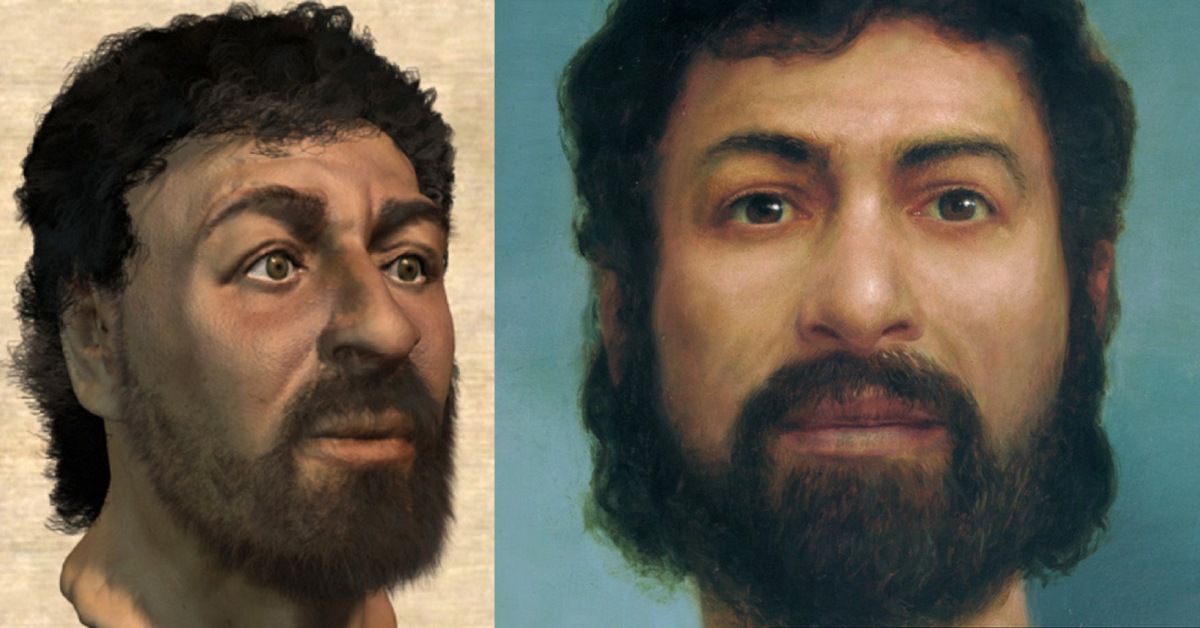I’ve stumbled upon this on the Internet and then got into the topic deeper:

As Moco-Choco puts it so well, for the dominant image of Jesus as a white person, or indeed the archetypical ‘whitey’, we have to blame those Renaissance era master artists – Da Vinci, Raphael, Michelangelo and his ilk. True to their artistic loyalties, they painted Jesus like a handsome Greek or Italian man. It helped that it became easily identifiable for followers of Christianity in Europe. In the age of the Crusades, the Church was better off not reminding people they were praying to a little, brown Jew.
Similarly, many African and Arab Christians painted Jesus with dark skin and bushy mop, or painters from Far East or Hispanic regions added local racial features – something which immediately invokes easier association.

“The influences of the artists’ cultures and traditions can be profound”, observes Carlos F. Cardoza-Orlandi, associate professor of world Christianity at Columbia Theological Seminary in Atlanta. “While Western imagery is dominant, in other parts of the world he is often shown as black, Arab or Hispanic.” And so the fundamental question remains: What did Jesus look like?
Most scholastic texts, however, agree that Jesus was like a ‘common man’, a fellow ‘brother’ to the mankind. So as you can probably guess, Yeshua of Nazareth, the man Christians think of as “Jesus Christ” today, actually looked a lot more Middle Eastern seeing as he was… well… actually Middle Eastern.
A more definite answer has emerged from an exciting new field of science: forensic anthropology. Using methods similar to those police have developed to solve crimes, British scientists, assisted by Israeli archeologists, have re-created what they believe is the most accurate image of the most famous face in human history:

While forensic anthropology – an outgrowth of physical anthropology that uses cultural and archeological data as well as the physical and biological sciences to study different groups of people – is usually used to solve crimes, Richard Neave, a medical artist retired from The University of Manchester in England, realized it also could shed light on the appearance of Jesus. The co-author of Making Faces: Using Forensic And Archaeological Evidence, Neave had, over the past two decades, reconstructed dozens of famous faces, including Philip II of Macedonia, the father of Alexander the Great, and King Midas of Phrygia. If anyone could create an accurate portrait of Jesus, it would be Neave. (You can read in detail about how Neave arrived at these features on Popular Mechanics).

UPDATE: apparently (thanks Jason McNeil for the info) there’s another angle to the story too, as according to The Holy Prepuce, White Jesus could be modeled on Cesare Borgia.
The theory is that people were generally not too enthusiastic about the Catholic Church’s regular massacres of Jews and Muslims, because the people they were killing looked like Jesus. Pope Alexander VI then ordered the destruction of all art depicting a Semitic Jesus and commissioned a number of paintings depicting a Caucasian Jesus. His son, Cardinal Cesare Borgia, was the model for these paintings. Thus, the nastiest of all the Borgias, became the iconic Caucasian Jesus worshipped by Christians today.

